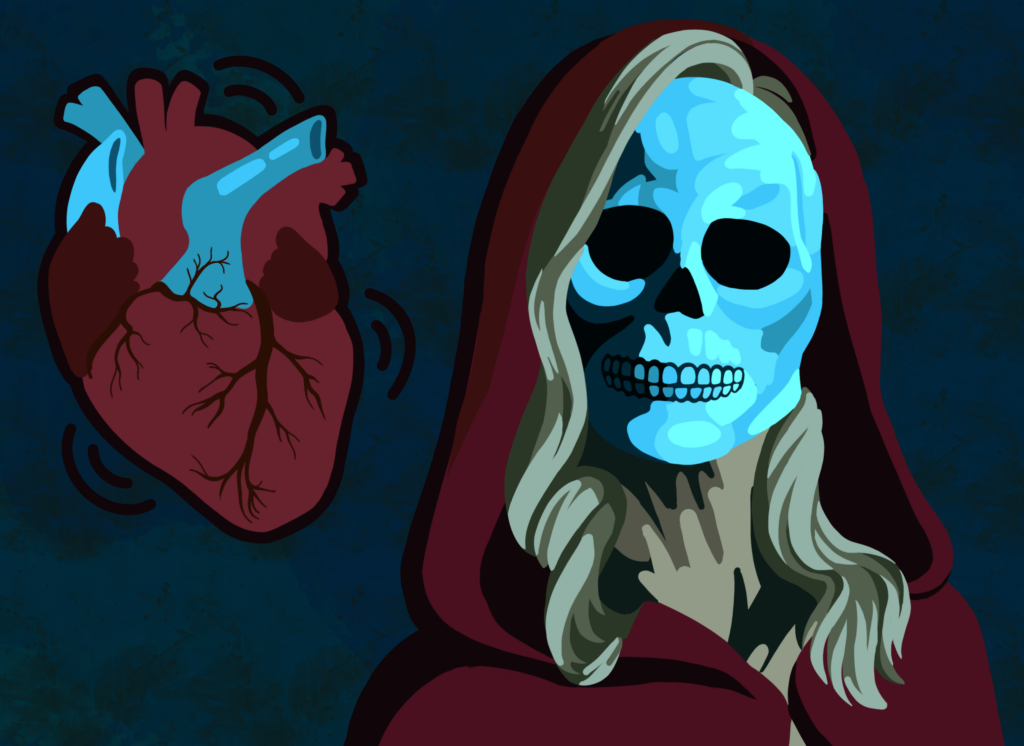★★★★☆
“Remember the golden rule,” Roderick Usher (Bruce Greenwood) said as he recounted his gruesome tale amid flickering lamplight.
“Those who have the gold make the rules,” he said.
And director and writer Mike Flanagan has, once again, struck gold.
Flanagan, a partner in Intrepid Films and filmmaker best known for his work on “The Haunting of Hill House” and “The Haunting of Bly Manor,” among many other frightening titles, is somewhat of a goldmine in the realm of psychosocial familial horror. “Hill House” hit Netflix in 2018, as thousands of people tuned in with eyes covered and hearts pounding. Since, devoted fans and casual viewers alike have kept a close (or averted — you never know what lurks in the on-screen shadows) eye on what Flanagan will produce next.
“The Fall of the House of Usher,” released Oct. 12, is another successful installment in Flanagan’s masterful, yet horrifying, repertoire.
“The Fall of the House of Usher,” named after and based on the short story by American gothic writer and poet Edgar Allen Poe, tracks the demise of the Usher family, transformed into greedy, egotistical 21st-century pharmaceutical moguls in Flanagan’s modernized retelling. Each episode follows the brutal, gory and often justified death of each of the six (horrible in their own special way) Usher children — Frederick (Henry Thomas), Tamerlane (Samantha Sloyan), Victorine (T’Nia Miller), Camille (Kate Siegel), Napoleon (Rahul Kohli) and Prospero (Sauriyan Sapkota). Each death poetically parallels one of Poe’s other works, from “The Black Cat” to “The Masque of the Red Death,” in manners that range darkly humorous to sickening.
Beside the overt references to Poe, such as the repeating raven motifs and excerpts of “Annabel Lee” woven throughout the script in both flashback scenes and voiceovers, Flanagan’s mastery of the source material makes each episode — and the series altogether — a riveting literary puzzle. Poe fans will enjoy the small details that tie the characters and narratives together, and those without background knowledge of 20th-century American gothic literature will likewise appreciate the way the writers balance multiple storylines to create a psychologically thrilling show, horrifying with its monstrous characters almost pulled from reality, not just ripped-up, bloody ghosts.
While the “final girl trope” or casts of cliched high schoolers often plague horror, “House of Usher” follows in the footsteps of Flanagan’s previous series with its large ensemble cast holding the reins. Each character is fully realized, and though satirical, feels real (as much as viewers don’t want them to be) and tangible, making up for some lapses in the script. Viewers who have tuned into either “Haunting of …” shows, “Midnight Mass,” “The Midnight Club” or even some of Flanagan’s feature films will find familiar faces in “House of Usher.”
Almost every Usher family member — save for Lenore and Madeline — is played by a recurring actor from the wider “Flanaverse,” swapping their skins from, say, beloved 1980s housekeepers (Hannah from “The Haunting of Bly Manor”) to increasingly deranged medical researchers (Victorine in “House of Usher”), showcasing the chameleon-like abilities of Flanagan’s cast. The house of Usher is crumbling, and each actor depicts their fall with compelling and intricate performances informed by smart and inventive narrative writing, fleshing out the frame of a story from Poe for contemporary audiences.
While the acting and narrative of “House of Usher” is stunning, the camerawork and cinematography brings an otherworldly element to the show. It employs clever angles and lighting to deliver an overall environment of chilling terror.
The entire series is set in a frame of a conversation between Roderick Usher, the patriarch of the “Succession”-like billionaire family, and C. Auguste Dupin (Carl Lumbly), Flanagan’s version of Poe’s gothic detective character. The conversation takes place late at night, in Usher’s dilapidated family home, where a young Roderick, his twin Madeline and their mother in the first episode allude to the tragic storyline of the original “The Fall of the House of Usher.”
Floorboards creak, tattered curtains billow in the wind from the thunderstorm outside, figures you didn’t even know were there move away, out of the shadows. Lighting periodically illuminates the empty (or occupied) space behind Dupin; the flickering oil lamp makes every movement of Usher’s look jerky, every word panicked and dire.
“The Fall of the House of Usher” ends the only way it can: the destruction of the house, both literally and figuratively. But before it goes, Flanagan made sure to show us the destruction that the house wrought on the world.














